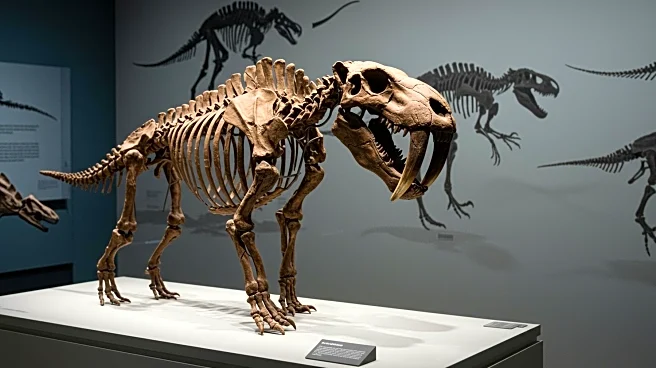Rapid Read • 8 min read
A fossil of Novaculadon mirabilis, a sharp-toothed mammal, has been discovered on a Dorset beach. This rodent-like mammal belonged to the multituberculates order and thrived among dinosaurs before vanishing approximately 30 million years ago. The fossil includes a complete jawbone with most teeth intact, such as a robust incisor and premolars, though it lacks molars. Researchers used X-ray computed tomography to digitally isolate the teeth, ensuring the delicate fossil remained undamaged. This discovery marks the first substantially complete multituberculate jaw found since the 1850s, when Samuel Beckles uncovered several mammal species during a large-scale excavation. The Novaculadon fossil was found in a layer above Beckles's findings, indicating it is younger than those discovered over 170 years ago.
AD
The discovery of Novaculadon mirabilis provides significant insights into the evolutionary history of mammals, particularly those that survived the mass extinction event that wiped out the dinosaurs. Understanding the characteristics and adaptations of multituberculates can shed light on how certain species managed to thrive in post-dinosaur ecosystems. This finding contributes to the broader scientific knowledge of mammalian evolution and biodiversity during the Cretaceous period. It also highlights the importance of fossil records in reconstructing ancient ecosystems and understanding the survival mechanisms of early mammals.
Researchers may continue to study the Novaculadon fossil to gain further insights into its anatomy and ecological role during its time. Additional excavations in the Dorset area could potentially uncover more fossils, providing a clearer picture of the biodiversity and environmental conditions of the period. The scientific community may also explore comparisons with other multituberculate fossils to understand evolutionary trends and adaptations. These studies could lead to new theories about mammalian survival and evolution in prehistoric times.
The discovery of Novaculadon mirabilis raises questions about the adaptability and resilience of early mammals in changing environments. It prompts discussions on the evolutionary strategies that allowed certain species to survive mass extinction events. This finding may also influence paleontological methods, encouraging the use of advanced imaging technologies like X-ray computed tomography to study delicate fossils without causing damage.
AD
More Stories You Might Enjoy










